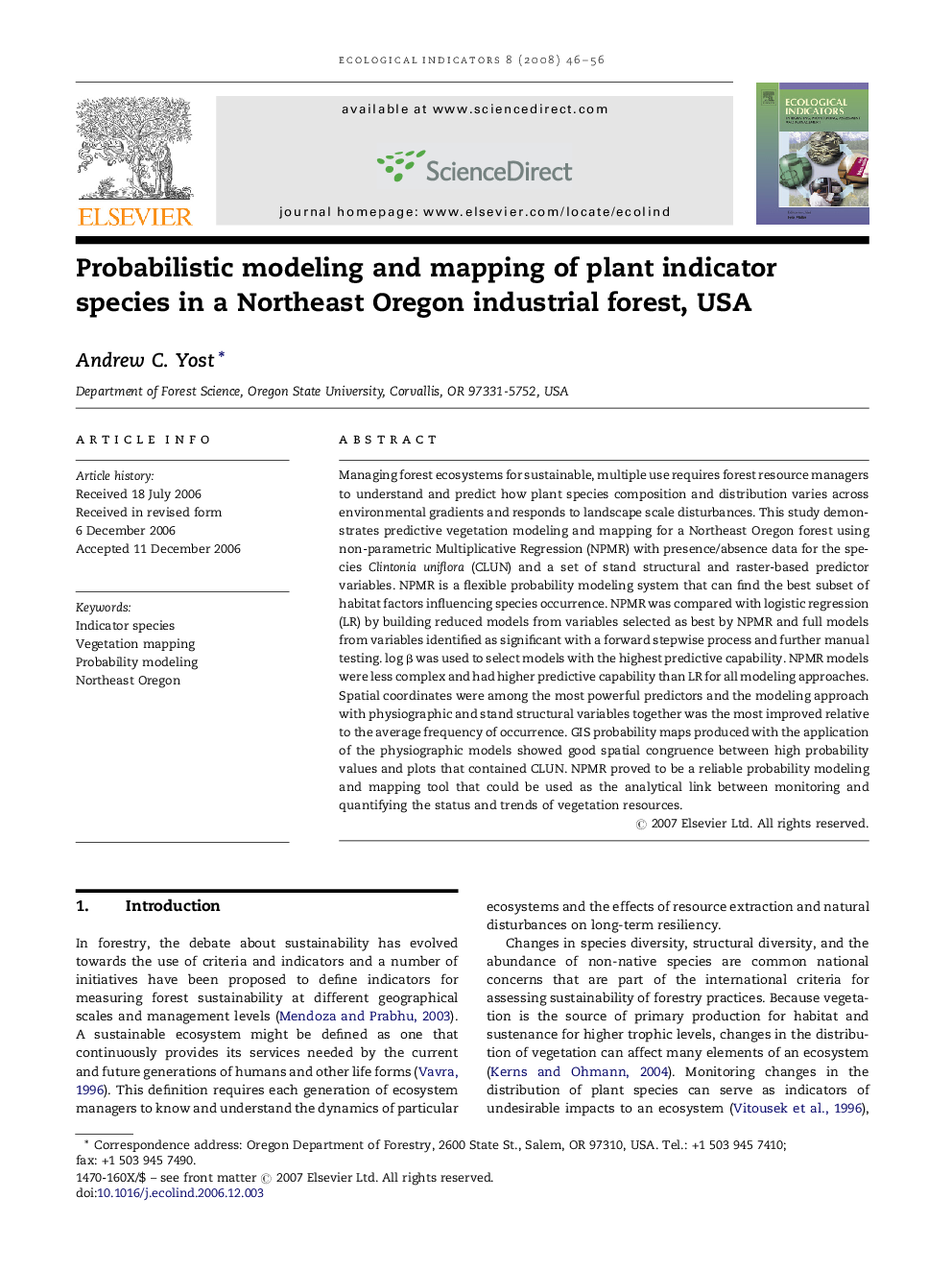| Article ID | Journal | Published Year | Pages | File Type |
|---|---|---|---|---|
| 4374602 | Ecological Indicators | 2008 | 11 Pages |
Abstract
Managing forest ecosystems for sustainable, multiple use requires forest resource managers to understand and predict how plant species composition and distribution varies across environmental gradients and responds to landscape scale disturbances. This study demonstrates predictive vegetation modeling and mapping for a Northeast Oregon forest using non-parametric Multiplicative Regression (NPMR) with presence/absence data for the species Clintonia uniflora (CLUN) and a set of stand structural and raster-based predictor variables. NPMR is a flexible probability modeling system that can find the best subset of habitat factors influencing species occurrence. NPMR was compared with logistic regression (LR) by building reduced models from variables selected as best by NPMR and full models from variables identified as significant with a forward stepwise process and further manual testing. log β was used to select models with the highest predictive capability. NPMR models were less complex and had higher predictive capability than LR for all modeling approaches. Spatial coordinates were among the most powerful predictors and the modeling approach with physiographic and stand structural variables together was the most improved relative to the average frequency of occurrence. GIS probability maps produced with the application of the physiographic models showed good spatial congruence between high probability values and plots that contained CLUN. NPMR proved to be a reliable probability modeling and mapping tool that could be used as the analytical link between monitoring and quantifying the status and trends of vegetation resources.
Keywords
Related Topics
Life Sciences
Agricultural and Biological Sciences
Ecology, Evolution, Behavior and Systematics
Authors
Andrew C. Yost,
